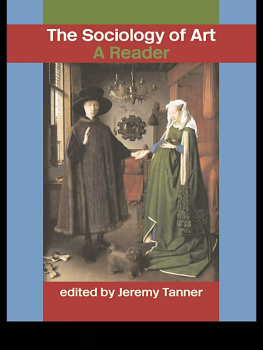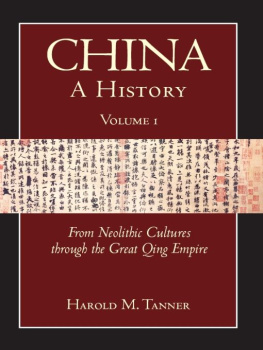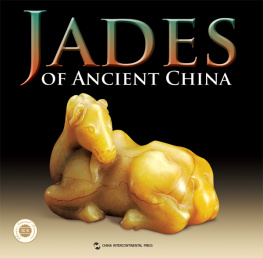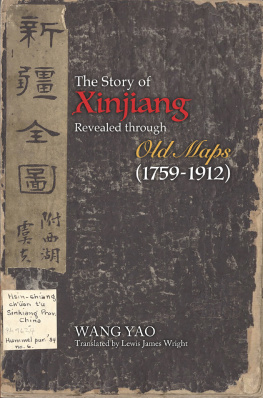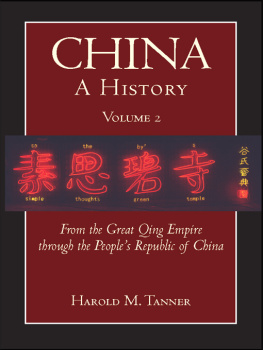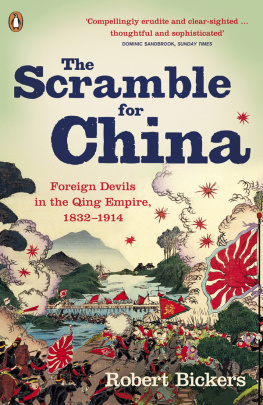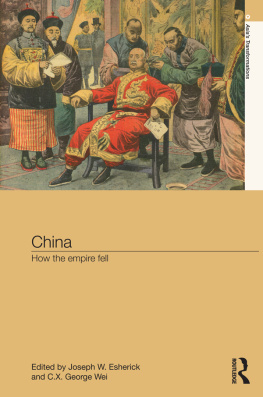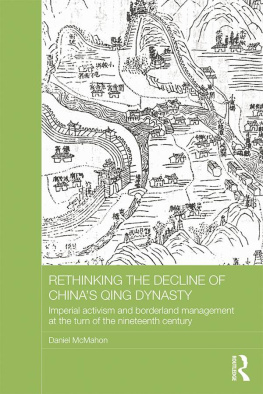Tanner - China: a history 1 From Neolithic cultures through the Great Qing Empire (10,000 BCE-1799 CE)
Here you can read online Tanner - China: a history 1 From Neolithic cultures through the Great Qing Empire (10,000 BCE-1799 CE) full text of the book (entire story) in english for free. Download pdf and epub, get meaning, cover and reviews about this ebook. City: Indianapolis, year: 2010;2011, publisher: Hackett Publishing Company, Inc., genre: Politics. Description of the work, (preface) as well as reviews are available. Best literature library LitArk.com created for fans of good reading and offers a wide selection of genres:
Romance novel
Science fiction
Adventure
Detective
Science
History
Home and family
Prose
Art
Politics
Computer
Non-fiction
Religion
Business
Children
Humor
Choose a favorite category and find really read worthwhile books. Enjoy immersion in the world of imagination, feel the emotions of the characters or learn something new for yourself, make an fascinating discovery.
- Book:China: a history 1 From Neolithic cultures through the Great Qing Empire (10,000 BCE-1799 CE)
- Author:
- Publisher:Hackett Publishing Company, Inc.
- Genre:
- Year:2010;2011
- City:Indianapolis
- Rating:3 / 5
- Favourites:Add to favourites
- Your mark:
- 60
- 1
- 2
- 3
- 4
- 5
China: a history 1 From Neolithic cultures through the Great Qing Empire (10,000 BCE-1799 CE): summary, description and annotation
We offer to read an annotation, description, summary or preface (depends on what the author of the book "China: a history 1 From Neolithic cultures through the Great Qing Empire (10,000 BCE-1799 CE)" wrote himself). If you haven't found the necessary information about the book — write in the comments, we will try to find it.
China: a history 1 From Neolithic cultures through the Great Qing Empire (10,000 BCE-1799 CE) — read online for free the complete book (whole text) full work
Below is the text of the book, divided by pages. System saving the place of the last page read, allows you to conveniently read the book "China: a history 1 From Neolithic cultures through the Great Qing Empire (10,000 BCE-1799 CE)" online for free, without having to search again every time where you left off. Put a bookmark, and you can go to the page where you finished reading at any time.
Font size:
Interval:
Bookmark:

CHINA
A History
VOLUME 1
CHINA
A History
VOLUME 1
FROM NEOLITHIC CULTURES
THROUGH THE GREAT QING EMPIRE
10,000 BCE1799 CE
Harold M. Tanner
Hackett Publishing Company, Inc.
Indianapolis/Cambridge
Copyright 2010 by Hackett Publishing Company, Inc.
All rights reserved
Printed in the United States of America
14 13 12 11 10 1 2 3 4 5 6
For further information, please address
Hackett Publishing Company, Inc.
P.O. Box 44937
Indianapolis, Indiana 46244-0937
www.hackettpublishing.com
Cover design by Abigail Coyle
Interior design by Elizabeth L. Wilson
Maps by Tracy Ellen Smith
Composition by Agnews, Inc.
Printed at Sheridan Books, Inc.
Permission is granted to copy, distribute and/or modify the following images under the terms of the GNU Free Documentation License, Version 1.2 or any later version published by the Free Software Foundation; with no Invariant Sections, no Front-Cover Texts, and no Back-Cover Texts. A copy of the license can be found at http://www.gnu.org/licenses/ fdl-1.2-standalone.html.
Oracle bone, Shang dynasty, page 47. Copyright 2004 Herr Klubeisser.
Terracotta Officer, page 91. Copyright 2006 Tor Svensson.
Terracotta Army, page 93. Copyright 2006 Tor Svensson.
Every reasonable effort has been made to contact the rights holders of copyrighted materials in this book. The author and the publisher would be grateful for any additional information and will address any errors or omissions in subsequent printings of the book.
Library of Congress Cataloging-in-Publication Data
Tanner, Harold Miles.
China : a history / Harold M. Tanner.
v. cm.
Includes bibliographical references and index.
Contents: v. 1. From Neolithic cultures through the Great Qing Empire
(10,000 BCE1799 CE)v. 2. From the Great Qing Empire through the Peoples Republic of China (16442009).
ISBN 978-1-60384-202-0 (v. 1 : paper)ISBN 978-1-60384-203-7 (v. 1 : cloth)
ISBN 978-1-60384-204-4 (v. 2 : paper)ISBN 978-1-60384-205-1 (v. 2 : cloth)
1. ChinaHistory. I. Title.
DS735.T34 2010
951dc22 | 2009048040 |
ePub ISBN: 978-1-60384-565-6
CONTENTS
The page numbers in curly braces {} correspond to the print edition of this title.
{vii}
My education in Chinas history, language, and culture has been a long journeyboth real and metaphoricala journey in which this book marks only a milestone, not an end. It has taken me from my home in New Jersey to Taiwan and China, to London and New York City, and to my new home in Texas. The many people who have helped me along the way have enriched my knowledge and transformed my thinking, though perhaps not as thoroughly as they would have liked. Their teaching, advice, and support have made this book possible. The list of those to thank begins with my teachers: Parry Jones, who introduced me to the study of Chinas history at the Princeton Day School in New Jersey; Stuart Schram, Paul Chen, and Ian Nish at London Universitys School of Oriental and African Studies; and at Columbia University, Madeleine Zelin, Andrew Nathan, Tom Bernstein, Gari Ledyard, Bob Hymes, Wm. Theodore de Bary, Irene Bloom, Morris Rossabi, and Hans Beilenstein. I hope that this book reflects, at least in some small way, the breadth and depth of the education that I have been fortunate enough to receive from these and other teachers over the years.
Friends and colleagues near and far also made important contributions to what turned out to be a much larger project than I had anticipated. The University of North Texas and its Department of History have been supportive, particularly in granting me a semester of paid leave during which I wrote a large portion of the manuscript. I thank Johan Elverskog for his insights on religion, the Mongols, and Central Asia, and Margherita Zanasi for her comments on a number of chapters. Special thanks are due to Sarah Schneewind. Her encouragement of this project, close reading, and frank comments on many chapters were particularly helpful and well beyond the call of duty. I have also benefited tremendously from the comments of the external reviewers for this book: Joanna Waley-Cohen, Ruth Dunnell, Paul Fischer, Charles W. Hayford, Roland Higgins, Michael Loewe, Peter Perdue, Caroline Reeves, and Roger Thompson. I am grateful to my editor, Deborah Wilkes, for recruiting such notable scholars and for performing all the other tasks required to turn my ideas into a manuscript, and the manuscript into a book. Tracy Ellen Smith of Creative Design Resources has done a remarkable job {viii} of transforming my often unrealistic ideas into maps. While expressing my thanks to all those who have assisted in making this book possible, I reserve to myself the responsibility for any remaining errors or infelicities of style.
Finally, but most importantly, I offer my deepest thanks to my wife, Yiyun, and our children, Sophia and William. For years, and with good grace, they have made the sacrifices that seem to go along with research and writing, allowing me to work on too many evenings, too many weekends, and too many otherwise perfectly beautiful summer days, and putting up with my trips to archives and conferences. This book is for them, with my love and affection.
{ix}
Chinese names in this text have been written using the Hanyu pinyin system of Romanization. Most words are pronounced roughly the way an English-speaker would guess. There are a few important exceptions to this rule: c is pronounced as ts, q as ch, and x more or less like s. I have used nonpinyin spellings for a few individuals and entities whose names have become universally recognized under those earlier spellings in English-language literature. Thus, Sun Yat-sen (known in Chinese as Sun Wen or Sun Yixian), Chiang Kai-shek (pinyin Jiang Jieshi), the Kwantung Army (pinyin Guandong Army), and Manchukuo.
Mongolian names have been rendered in line with the system used in Christopher P. Atwood, Encyclopedia of Mongolian and the Mongol Empire (New York: Facts on File, 2004), ix. For Tibetan names, I have followed the system used by the International Association of Tibetan Studies (online at http://thdl.org).
{x}
Chinese characters from the Zhou Dynasty divination text, the Book of Changes (Yi jing), have been used as symbols for the Introduction and for each of the three parts of this book. The Book of Changes uses sixty-four hexagrams (combinations of broken and unbroken lines) to represent the stages of change in a cyclically changing universe. The hexagrams used in this text, their names, and their meanings are as follows:
Introduction:  (qian) The Creative. The first hexagram of the Book of Changes, qian symbolizes beginnings, justice, the way of the superior man, and the primal creative force of the universe.
(qian) The Creative. The first hexagram of the Book of Changes, qian symbolizes beginnings, justice, the way of the superior man, and the primal creative force of the universe.
Part I:  (shihe) Biting Through. This, the twenty-first hexagram, refers to the establishment of institutions and the judicious, yet forceful use of laws and punishments to bring about order and harmony.
(shihe) Biting Through. This, the twenty-first hexagram, refers to the establishment of institutions and the judicious, yet forceful use of laws and punishments to bring about order and harmony.
Part II:  (dayou) Possession in Great Measure. The fourteenth hexagram stands for blessings extended to all, just as the sun in the heavens shines equally on all below, bringing clarity and order to the world.
(dayou) Possession in Great Measure. The fourteenth hexagram stands for blessings extended to all, just as the sun in the heavens shines equally on all below, bringing clarity and order to the world.
Font size:
Interval:
Bookmark:
Similar books «China: a history 1 From Neolithic cultures through the Great Qing Empire (10,000 BCE-1799 CE)»
Look at similar books to China: a history 1 From Neolithic cultures through the Great Qing Empire (10,000 BCE-1799 CE). We have selected literature similar in name and meaning in the hope of providing readers with more options to find new, interesting, not yet read works.
Discussion, reviews of the book China: a history 1 From Neolithic cultures through the Great Qing Empire (10,000 BCE-1799 CE) and just readers' own opinions. Leave your comments, write what you think about the work, its meaning or the main characters. Specify what exactly you liked and what you didn't like, and why you think so.


